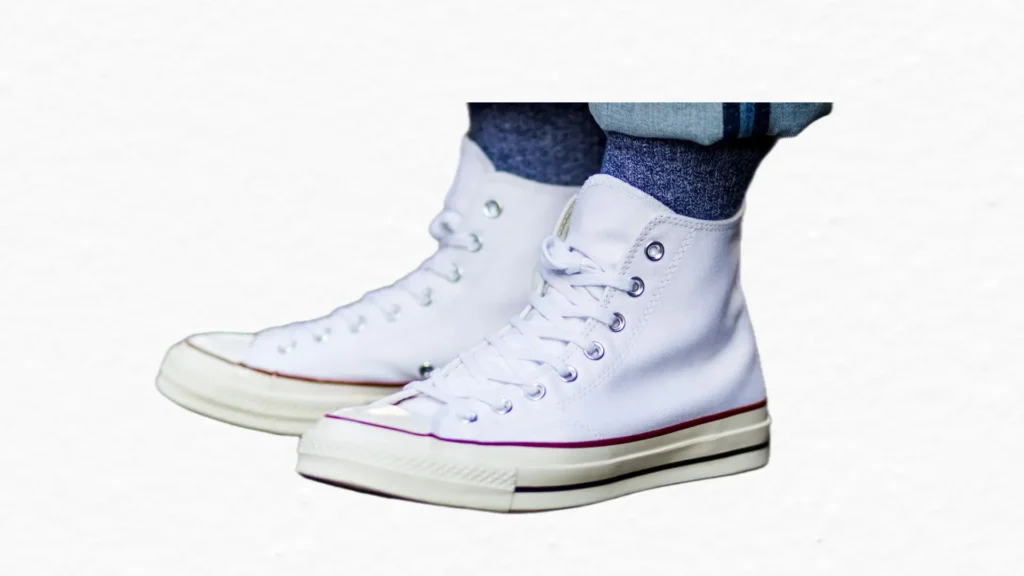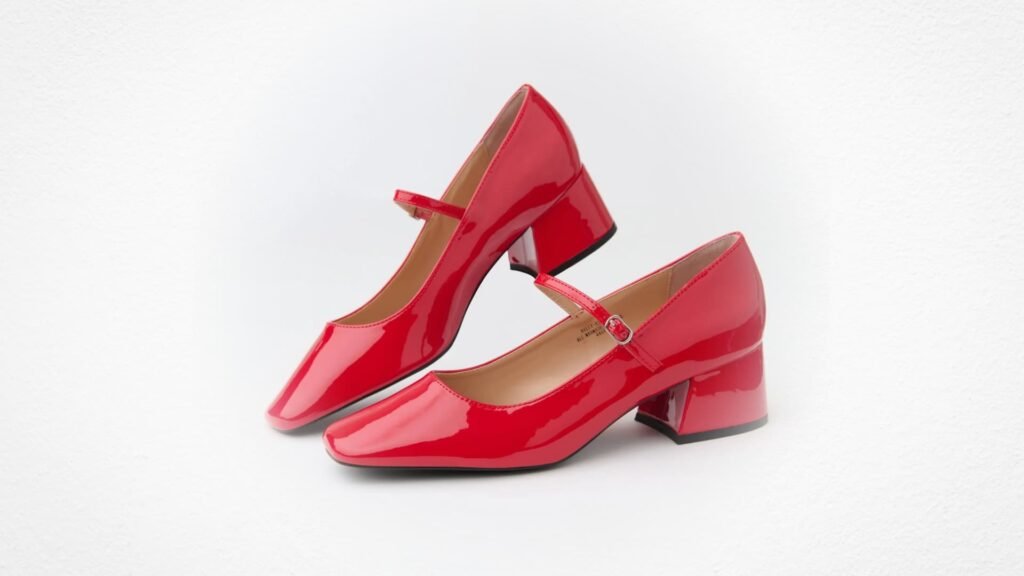Few transformations in the footwear industry are emblematic of broader societal change. The rise of gender-neutral shoes has triumphantly change the role of gender in the society. This growing trend represents a seismic shift away from the rigid, binary frameworks that have long dictated footwear design, marketing, and consumption.
What began as a niche experiment has blossomed into a mainstream movement. The shift in gender neutral shoes has reflected evolving attitudes toward gender, identity, and personal expression. Gender-neutral shoes are not just a fleeting style statement—they’re a cornerstone of an inclusive, fluid future in fashion.
What Defines Gender-Neutral Shoes?
At their core, gender-neutral shoes are about universality and choice. They eschew the trappings of traditional gendered design—no pastel pinks or navy blues mandated by outdated rules—and instead embrace versatility.
Common features include minimalist silhouettes. Platform sneakers, slip-on loafers, and ankle boots often rendered in black, white, gray, and earthy shades like olive and taupe. These colors and shapes serve as a blank slate. These allow wearers to style them according to their own vision rather than a preordained script.
But gender-neutral shoes aren’t just aesthetically agnostic Gender-neutral shoes are designed to appeal to all genders without adhering to traditional aesthetic cues. They feature minimalist silhouettes, neutral color palettes, and versatile designs that can be styled in multiple ways.
Unlike unisex shoes—which typically refer to items sized for men but marketed to both sexes—gender-neutral footwear takes into account diverse body types. They offer extended sizing ranges to accommodate everyone comfortably.
They address a long-standing frustration for those who fell outside traditional men’s and women’s categories. Materials play a pivotal role, too.
Sustainable options like recycled canvas, vegan leather, and organic cotton dominate, reflecting the eco-conscious ethos of modern consumers.
Some popular examples include chunky sneakers, sleek loafers, platform sandals, and combat boots. Converse, Vans, and Adidas have long offered classic models that naturally lend themselves to gender neutrality.
Veja, with its transparent supply chain, and Allbirds, with its carbon-neutral sneakers, exemplify this fusion of inclusivity and environmental responsibility.
High fashion has also embraced the trend, albeit with a twist. Balenciaga, Rick Owens, and Maison Margiela have introduced gender-neutral shoes that double as avant-garde art—oversized soles, deconstructed forms, and androgynous detailing to challenge conventional beauty standards.
Meanwhile, practicality remains a priority for mass-market options. Cushioning, arch support, and durability ensure these shoes aren’t just inclusive but wearable for all-day use. This balance of form and function has made gender-neutral footwear a staple across wardrobes.
The hallmark of gender-neutral shoes lies in their adaptability. A pair of white leather sneakers, for instance, can seamlessly transition from casual streetwear to polished office attire. Similarly, a sturdy pair of Chelsea boots can complement everything from tailored trousers to flowing dresses.
By focusing on simplicity and versatility, these designs allow wearers to express themselves authentically without being boxed into predefined categories.
The Evolution of Gendered Footwear
Footwear has historically been a gendered domain. These were steeped in cultural assumptions and reinforced by industry practices.
High heels were once considered appropriate for men in certain eras (such as 17th-century Europe), while flat, practical shoes became associated with women over time.
Similarly, athletic sneakers and rugged boots have long been marketed as masculine, while dainty flats or embellished sandals were deemed “feminine.” These distinctions not only limited consumer choice but also reinforced outdated stereotypes about how people should dress based on their gender.
For centuries, the design and marketing of shoes were dictated by strict gender roles. Women’s shoes were delicate and decorative. These shoes featured delicate materials, intricate details, and narrow silhouettes. Think towering stilettos, dainty flats, and embellished sandals. They were designed to accentuate femininity as defined by narrow stereotypes.
Men’s shoes, on the other hand, prioritized durability, functionality, and subdued aesthetics. Leather oxfords, rugged work boots, and athletic sneakers, all coded as utilitarian and masculine.
These distinctions weren’t just aesthetic; they extended to sizing conventions (a women’s size 8 rarely matched a men’s), width options, and even promotional imagery that depicted clear gender roles.
Even children’s footwear adhered to these binary classifications, with pink ballet flats for girls and sturdy sneakers for boys.
This binary system held firm for decades. Cracks began to appear as societal norms shifted. The late 20th and early 21st centuries saw growing visibility for feminist critiques of gendered fashion. By the 2010s, these cultural currents converged with a rising demand for authenticity and inclusivity.
A McKinsey & Company survey (title: The State of Fashion 2023) found that over 50% of Gen Z shoppers prioritize brands that align with their values. These values increasingly reject prescriptive norms in favor of individuality. Footwear became a natural battleground for this revolution, with gender-neutral designs emerging as a powerful response.
However, as conversations around gender identity and non-binary representation gained momentum, so too did calls for inclusive design.
Consumers began demanding products that aligned with their personal style rather than societal expectations. In response, forward-thinking brands started reimagining what footwear could look like when freed from binary constraints.
Pioneers of the Movement for Gender Neutral Shoes
The gender-neutral shoe phenomenon owes its momentum to a mix of visionary newcomers and adaptable industry giants. Converse set a benchmark in 2021 with its “Shapes” collection. The collection of sneakers engineered to fit a spectrum of foot sizes and shapes were marketed with a gender-agnostic ethos.
The campaign’s tagline— “Shapes for Every Step”—underscored its mission to prioritize individuality. This campaign earned accolades from consumers and critics alike.
Similarly, SYRO, a queer-founded label from Brooklyn, has gained a devoted following with its boundary-pushing designs. Think heeled boots and platform oxfords explicitly crafted for non-binary and gender-nonconforming wearers.
SYRO’s work challenges the notion that heels are inherently feminine. It reframed them as a bold, universal statement.
Mainstream brands have followed suit. Nike’s Air Force 1 and Adidas’s Superstar, once segmented by gender-specific campaigns, are now positioned as unisex icons. They were available in a rainbow of colors and sizes that defy old boundaries.
TOMS, with its minimalist slip-ons, and Rothy’s, with its machine-washable flats, have leaned into the trend. They blended sustainability with gender neutrality. Luxury fashion hasn’t lagged behind. Gucci’s gender-fluid collections feature loafers and mules styled on runways with eclectic, norm-defying ensembles.
Emerging designers are also making waves. Both & Apparel has built their entire identities around unisex footwear. They experiment with modular designs and customizable elements that let wearers tailor their shoes to their needs.
These pioneers aren’t just riding a wave. They’re actively shaping consumer expectations, proving that gender-neutral options can be both commercially viable and culturally resonant.
Changing Societal Norms
As society becomes more accepting of diverse gender identities, there’s less pressure to conform to rigid classifications. Non-binary and transgender individuals, in particular, have advocated for clothing and accessories that reflect their authentic selves.
This demographic shift has prompted brands to rethink their approach to product design and marketing.
The rise of gender-neutral shoes is inseparable from a broader cultural shift toward fluidity and self-determination. Fashion has always been a mirror for society, and today’s footwear reflects a world where identity is less tethered to traditional markers like gender.
Social media has turbocharged this movement. On TikTok, Instagram, and YouTube, creators of all backgrounds showcase these shoes in endlessly creative ways: pairing chunky sneakers with tailored suits, combat boots with flowing skirts, or loafers with athleisure.
Hashtags like #GenderNeutralFashion, #UnisexStyle, and #WearWhatYouWant have racked up millions of impressions, turning what began as a subculture into a global conversation.
This visibility has real-world impact. Schools, workplaces, and public spaces are increasingly reckoning with dress codes that once enforced gendered norms.
Gender-neutral shoes offer a practical bridge to equitable standards. They’ve also become a symbol of resistance for those pushing back against restrictive traditions. From queer youth to feminist activists who see footwear as a microcosm of larger battles for autonomy.
A 2024 Statista report noted that unisex apparel and footwear categories are growing at double-digit rates annually. Nordstrom and ASOS have expanded their gender-neutral offerings. What skeptics see as niche is proving to be a mainstream shift, driven by consumers who value flexibility over dogma.
Challenges and Opportunities of Gender Neutral Shoes
For all its progress, the gender-neutral shoe movement faces logistical and perceptual hurdles. Sizing remains a thorny issue—while brands are broadening ranges.
The lack of a universal unisex standard can leave shoppers confused or underserved. Production poses another challenge; crafting shoes that fit a wider array of feet often requires retooling molds and supply chains.
And despite growing acceptance, lingering stereotypes about “men’s” versus “women’s” styles can deter hesitant buyers.
These obstacles, though, double as opportunities. Technological innovation is poised to rewrite the rules of footwear design. 3D printing, already piloted by Adidas and New Balance, allows for bespoke fits tailored to individual feet, bypassing gendered molds entirely.
AI-driven design tools could analyze consumer preferences in real time. Sustainability offers another edge. Gender-neutral shoes often overlap with eco-friendly initiatives.
Collaborations are also key. Partnerships between brands and gender-diverse designers inject fresh perspectives into the market. These alliances ensure the trend evolves beyond its minimalist origins into something dynamic.
The trajectory of gender-neutral shoes points to a bold, expansive future. As technology and consumer demand converge, we may see a world where shoes are marketed not by gender but by purpose, mood, or aesthetic.
Customization could become the norm, with modular components (swap-out soles, adjustable straps) letting individuals craft their perfect pair. Sustainability will likely deepen its foothold. With circular production models, shoes are going to be recycled into new designs.
Beyond the practical, this movement carries symbolic weight. Gender-neutral shoes challenge us to rethink why we’ve clung to binaries for so long and what we gain by letting them go.
They’re a small but tangible step toward a world where identity isn’t dictated by external rules—a world where fashion serves as a tool for liberation, not limitation.
In the end, the rise of gender-neutral shoes is a testament to human adaptability. It’s a trend born from necessity, nurtured by creativity, and propelled by a collective desire for something better. As it strides, one truth stands clear: footwear isn’t just about where we’re going—it’s about who we’re becoming. In this new era, every step is a chance to define ourselves, free from the confines of the past.




